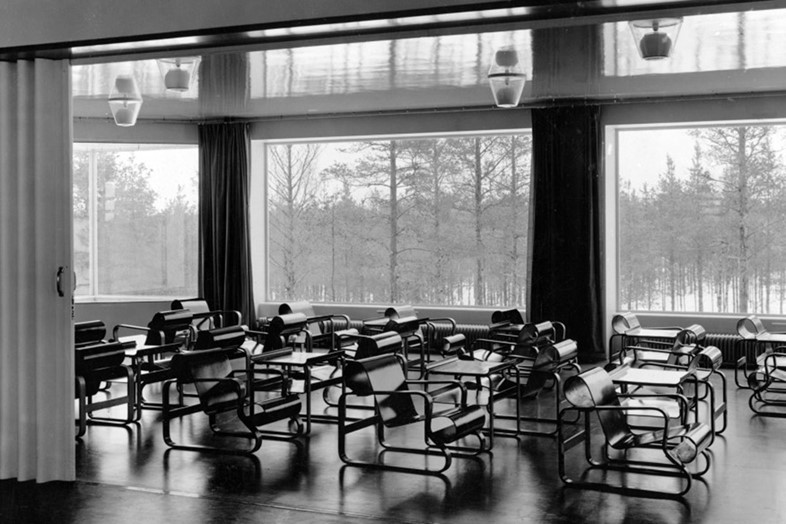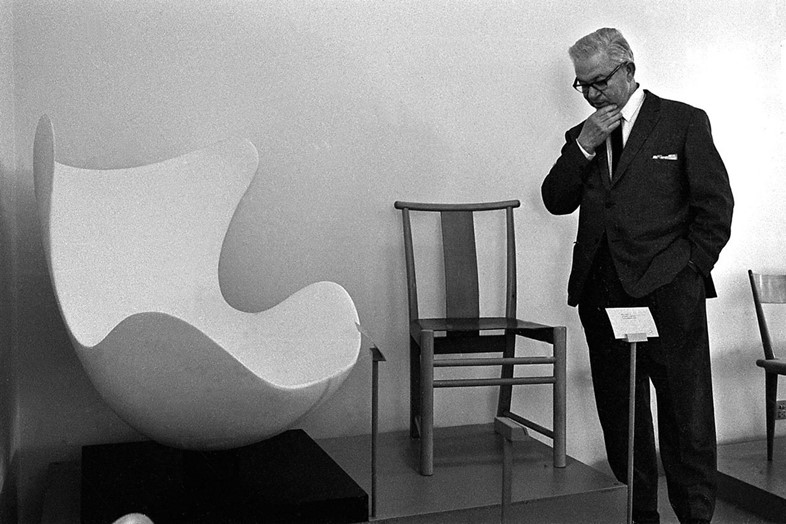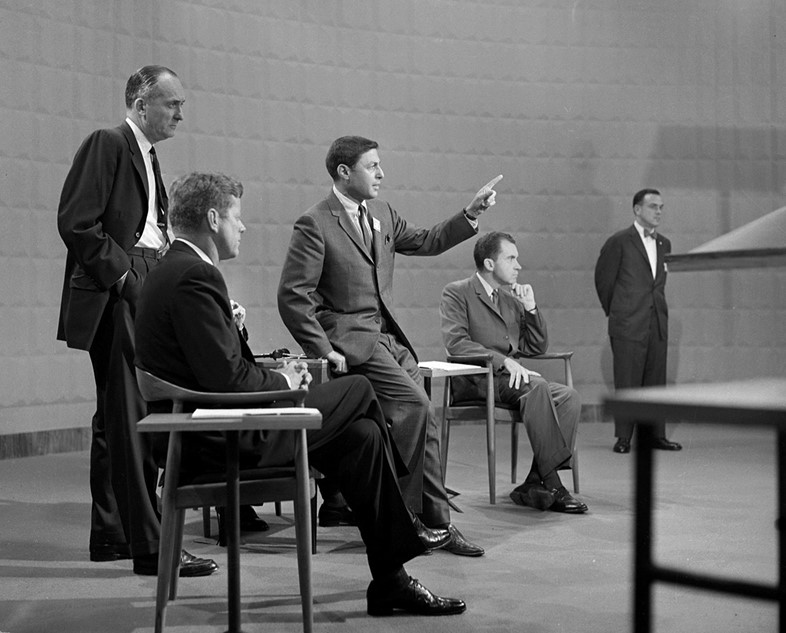As Stockholm Design Week hits its stride, AnOther selects five chairs by Scandinavian designers which came to define the Mid-Century Modern
An understanding of classical furniture and craftsmanship, in-depth research into materials, proportions and production, and an exploratory and definitive practice came to define the work of mid-20th-century Scandinavian furniture designers. Before long, they had carved out a niche for themselves with the curvature, simplicity and modernism of their work, inspired by the Bauhaus, and later in conversation with the work of American designers such as the Eames’ here has meant enduring influence.
To celebrate Stockholm Design Week, which is taking place in the Swedish capital from February 8 until 14, we highlight five key chairs from the Mid-Century Modern – from the stackable chair so iconic that Kate Moss sat astride it on a 1995 cover of British Vogue, to the egg-shaped wonder which later graced the Big Brother diary room, to great acclaim.

The Paimio Chair, by Alvar & Aino Aalto
In 1928, having won an architectural competition to build a tuberculosis sanitarium near the Finnish city of Paimio, architects and designers Alvar and Aino Aalto were commissioned to design the building’s interior, too. Thus, the Paimio chair was born, intended for the patients’ lounge at the sanitarium, and inspired by the tubular steel furniture of the Bauhaus – and more specifically, Marcel Breuer’s B3 chair.
The Aaltos deemed tubular steel too cold and psychologically hard a material for such an environment, and so worked instead with birch and plywood to give a softer finish. The supple materials responded to the closed loops and sinuous scrolls of their design, which created a seating angle intended to help sitters breathe more easily. Innovative and resilient, the Paimio tested the limits of plywood manufacturing and had a great influence on the work of the likes of Charles and Ray Eames and Eero Saarinen.

The Panton Chair, by Verner Panton
German-American architect Ludwig Mies Van Der Rohe was the first to come up with the idea of a stackable plastic chair, but from the early 1950s onwards, his successor Verner Panton was also experimenting, attempting to make a stackable, cantilevered plastic chair entirely out of one piece. In 1956, Panton designed the S chair, the forerunner to the refined Panton, which came a few years later. The complexity of producing such a piece at the time slowed down its progress, but the chair finally went into production with manufacturing company Vitra in 1967.
Panton was key to the role of furniture design in pop art, and the design aesthetic that reflected the “Space Age” affair of the era. The Panton was soon adopted into popular culture with a starring role in a 1971 edition of Nova, in an editorial illustrating “How to Undress for Your Man”, and in a 1995 edition of British Vogue, when the chair was sat astride by a naked Kate Moss, as photographed by Nick Knight.

The Egg Chair, by Arne Jacobsen
Architect Arne Jacobsen was commissioned to design Copenhagen’s SAS Royal Hotel in 1956, for which he was to design everything from the building to the souvenir shop’s ceramic ashtrays – including a cutlery set that was later to be used by Stanley Kubrick in 2001: A Space Odyssey.
With the opportunity to implement his theories of integrated design, Jacobsen established the theme of a modern garden, which he communicated through his choice of textiles and organic shapes. The Egg chair was designed for the lobby and reception areas of the hotel, and had the characteristic grace and coherence Jacobsen had become known for. It was later used as the “diary room” chair in the first UK series of Big Brother and has recently been adopted by some European branches of McDonalds with upscale ambitions.

The Round Chair, by Hans J. Wegner
Hans J. Wegner’s Round chair is widely considered to be one of the most famous pieces of Danish furniture ever made, due in no small part to its adoption by John F. Kennedy and Richard Nixon as the seating of choice for their 1960 election debate, which was the first ever to be televised.
In its 1960s heyday, the chair also triggered the first international report on Danish design, in the American edition of Interiors Magazine, thereby playing a recognisable role in the international recognition of Danish Modern as a movement. Wegner’s Round chair, which was later known simply as 'The Chair', features a curved wooden back and arms made of a single piece of wood, with gradually tapered legs that extend beyond the seat acting as support for the arms and back. It is believed to be the moment Wegner came into his own: no longer inspired by other cultures, he began working from his own influential design language.

The GJ Chair, by Grete Jalk
Inspired by the furniture design of Alvar & Aino Aalto and Charles & Ray Eames, danish designer Grete Jalk opened her own design practice in 1953. The GJ chair, made from laminated plywood, is one of her most renowned designs. Almost origami-like in its composition, its sweeps and folds pushed production technology to its limits, and in the 1960s only a few hundred were made due to the complex process. Although scarce, the GJ chair represented the possibilities of design, a challenge to production technology and the expectations of form.
Jalk had apprenticed as a cabinet maker and studied furniture at the Copenhagen Royal Academy of Fine Arts under the mentorship of Kaare Klint before branching off on her own, and one of her first projects as a designer was, pleasingly, a furniture set in 1947 designed for the den of “a self-supporting woman”. She designed a sofa-bed, wall-mounted storage, and a desk, to establish a space that functioned as both a bedroom and study for the working women of the 1940s.
